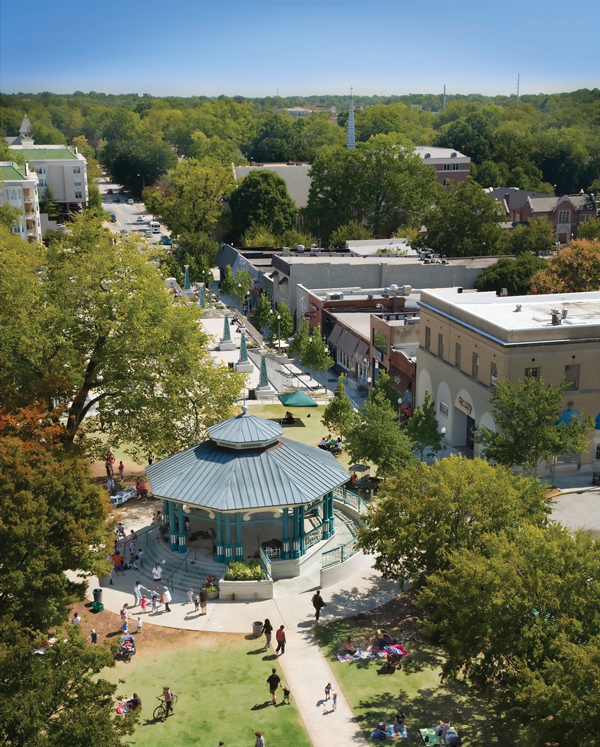
Photograph courtesy of the City of Decatur
My wife and I moved to Decatur in 2009 when we were expecting our first child. We’re lucky we bought when we did; Decatur’s current real estate market is out of our price range. By a long shot. In the past year, the assessed value of our house went up by 50 percent. That’s right: fifty. When my mortgage company sent me an escrow shortage notice, I wanted to put my fist through the drywall, but then I realized I couldn’t afford to fix it. (And yeah, I’m looking to appeal.) Bill Adams, a Realtor who lives in Decatur, told me that the average sales price in Decatur was, in 2015, well over a half million dollars. If you’ve spent any time there, that’s no surprise. The few vacant parcels that remain are each sprouting their own Craftsman, complete with tapered pillars and carefully unrolled sod. And the existing stock? More and more of the older ranch houses and bungalows are being leveled, or their owners are clearing out for six months while contractors build on new floors or wings. I understand the urge; my wife and I have two young boys, and with every pound they put on, the 1,600 square feet we share feels more cramped.
It’s amazing, isn’t it, the effect that good public schools can have? Still, when I drop off my son at kindergarten, I have to wonder just how many of the teachers at his school can even afford to live in the city where they work. Decatur fancies itself a place of public-minded folks who want to do the right thing, but there’s no escaping what is, in real estate anyway, axiomatic: A rising tide does not lift all boats. Some sink. This sense of unease permeates much of the real estate package in this month’s issue. Josh Green, a frequent contributor to the magazine, applied his reportorial skills to a subject that literally couldn’t be closer to home—how his decision to buy a house in Kirkwood made his young family part of the cycle of gentrification.
We also feature an excerpt from Where We Want to Live, a book written by Ryan Gravel, the closest thing the city of Atlanta has to a modern folk hero; it was his master’s thesis, after all, that led to the BeltLine. More than just a history of Atlanta’s biggest civic undertaking in generations, Where We Want to Live explores the transformative power of grassroots movements, and how true change in the way we live will always come from the ground up. I took my boys to the BeltLine’s Eastside Trail the other day, and it was so crowded it felt like the pedestrian equivalent of Georgia 400 at rush hour. A success, right? Not yet. In a conversation that accompanies the excerpt, Gravel spoke at length about how true success for the BeltLine means it must be more than a place to stretch your legs. Transit, Gravel said, is essential. So is affordable housing. There’s so much left to do.
This article originally appeared in our March 2016 issue.













